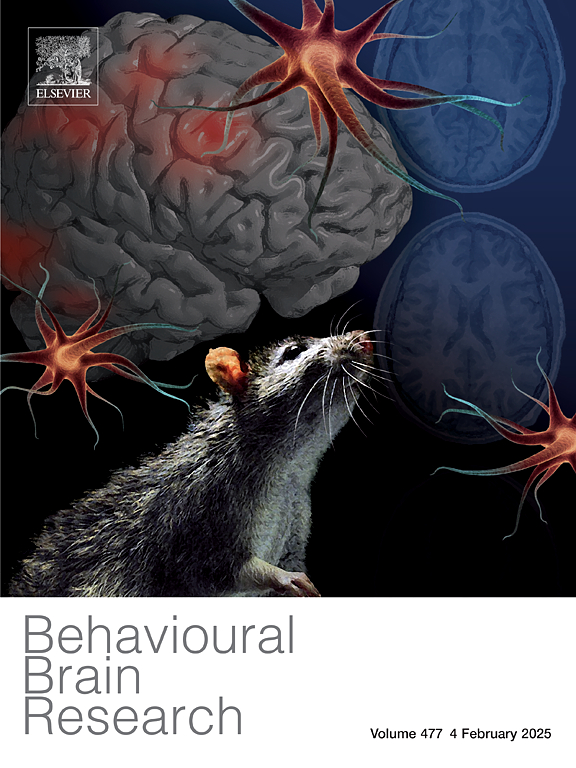The shared genetic structure and causal analysis between frailty and suicide
IF 2.6
3区 心理学
Q2 BEHAVIORAL SCIENCES
引用次数: 0
Abstract
Background
Frailty is associated with decreased physiological reserves, loss of independence, and depression, and may be particularly relevant for identifying elderly individuals at increased risk for suicide attempts. However, the relationship between frailty and suicide attempt risk remains unclear, and the underlying mechanisms linking the two are still insufficiently explored.
Methods
Using data obtained from genome-wide association study (GWAS) summaries, we employed linkage disequilibrium score regression (LDSC) to determine the genetic correlation between frailty and suicide. To visualize the cross-trait genetic enrichment between suicide and FI, we constructed conditional quantile-quantile (Q-Q) plots. Causal relationships were established using two-sample Mendelian randomization. We conducted a gene-based multivariate analysis (MAGMA) to examine the enrichment of single nucleotide polymorphisms (SNPs) across various tissue types.
Results
There is a significant positive genetic correlation between frailty and suicide (rg = 0.35, p = 5.74E-21). Mendelian randomization revealed a causal relationship between the genetic susceptibility of frailty and suicide (OR, 1.77; 95 % CI: 1.37–2.31; p = 1.72E-05). The genetic correlation between frailty and suicide showed significant enrichment in both the cerebellar hemispheres and the cerebellum.
Limitations
One limitation of this study is that it relies on summary-level GWAS data, which may not capture individual-level heterogeneity or account for potential confounders in the frailty-suicide relationship.
Conclusion
There is a genetic correlation and causal relationship between frailty and suicide, and this relationship may be mediated by the cerebellum. These findings contribute to a deeper understanding of their pathogenesis and could aid in identifying potential therapeutic targets and early screening strategies.
脆弱与自杀的共同遗传结构及其原因分析。
背景:虚弱与生理储备减少、独立性丧失和抑郁有关,并且可能与识别自杀企图风险增加的老年人特别相关。然而,虚弱和自杀企图风险之间的关系仍然不清楚,并且两者之间的潜在机制仍然没有得到充分的探索。方法:利用全基因组关联研究(GWAS)总结的数据,采用连锁不平衡评分回归(LDSC)来确定虚弱与自杀之间的遗传相关性。为了可视化自杀和自杀之间的交叉性状遗传富集,我们构建了条件分位数-分位数(Q-Q)图。采用双样本孟德尔随机化建立因果关系。我们进行了一项基于基因的多变量分析(MAGMA)来检测不同组织类型中单核苷酸多态性(snp)的富集情况。结果:体质脆弱与自杀呈显著正相关(rg = 0.35, p = 5.74E-21)。孟德尔随机化揭示了脆弱的遗传易感性与自杀之间的因果关系(OR, 1.77;95% ci: 1.37-2.31;P = 1.72 -05)。脆弱和自杀之间的遗传相关性在小脑半球和小脑中都有显著的富集。局限性:本研究的一个局限性是它依赖于汇总水平的GWAS数据,这可能无法捕获个体水平的异质性或解释脆弱-自杀关系中的潜在混杂因素。结论:虚弱与自杀之间存在遗传相关和因果关系,这种关系可能通过小脑介导。这些发现有助于更深入地了解其发病机制,并有助于确定潜在的治疗靶点和早期筛查策略。
本文章由计算机程序翻译,如有差异,请以英文原文为准。
求助全文
约1分钟内获得全文
求助全文
来源期刊

Behavioural Brain Research
医学-行为科学
CiteScore
5.60
自引率
0.00%
发文量
383
审稿时长
61 days
期刊介绍:
Behavioural Brain Research is an international, interdisciplinary journal dedicated to the publication of articles in the field of behavioural neuroscience, broadly defined. Contributions from the entire range of disciplines that comprise the neurosciences, behavioural sciences or cognitive sciences are appropriate, as long as the goal is to delineate the neural mechanisms underlying behaviour. Thus, studies may range from neurophysiological, neuroanatomical, neurochemical or neuropharmacological analysis of brain-behaviour relations, including the use of molecular genetic or behavioural genetic approaches, to studies that involve the use of brain imaging techniques, to neuroethological studies. Reports of original research, of major methodological advances, or of novel conceptual approaches are all encouraged. The journal will also consider critical reviews on selected topics.
 求助内容:
求助内容: 应助结果提醒方式:
应助结果提醒方式:


